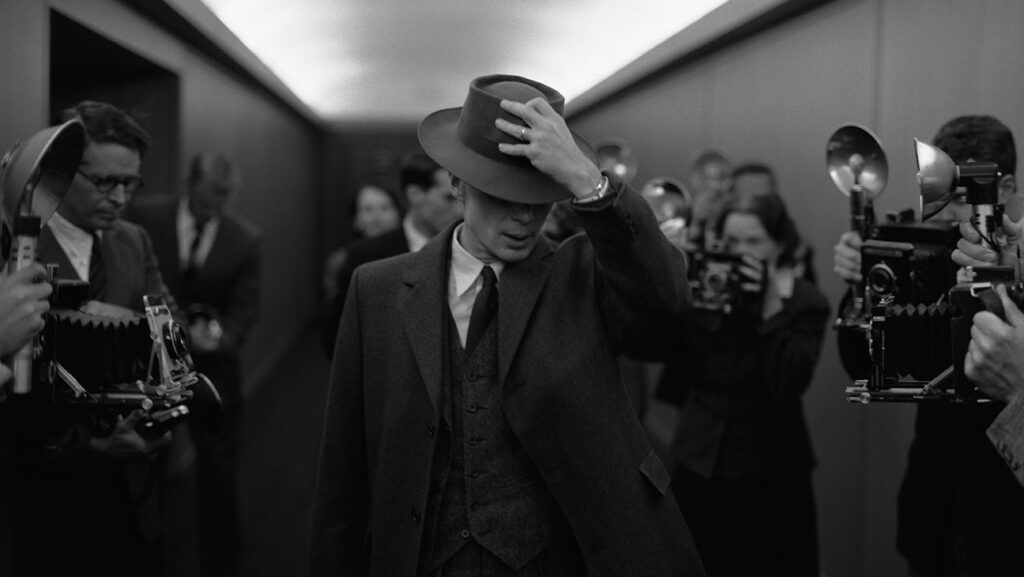‘Oppenheimer’ review: a towering masterclass in multiplex movies
Christopher Nolan's big screen take on the father of the atomic bomb deserves to be seen on the biggest screen possible.
By Anna Smith

A powerful, visually spectacular drama that demands your full concentration, Oppenheimer is unmistakably the work of writer-director Christopher Nolan. His second historical film after Dunkirk, it stars an excellent Cillian Murphy as the titular scientist, J Robert Oppenheimer, known as the father of the atomic bomb.
How does a scientist create a device that could kill millions – and how does he live with that knowledge? Nolan’s film goes some way to exploring this, as we see Oppenheimer wrestling with his conscience yet excited by invention – along with the chance to beat the Nazis in the arms race. After plenty of scene-setting in academic circles, the action moves to the Los Alamos laboratory in New Mexico, 1945, where the Manhattan Project team prepare for the Trinity Test: the controlled detonation of the world’s first nuclear device. What are the chances this could actually blow up the entire world? asks Matt Damon’s project director Lt Leslie Groves Jr. “Chances are near zero,” comes Oppenheimer’s unreassuring response. The tension is palpable as hands hover over the big red button. This is the film’s stand out sequence, nerve-wracking and even darkly funny as scientists pull up chairs and cover themselves with sunscreen to watch the blast in the desert. Hoyt van Hoytema’s cinematography is particularly jaw-dropping here, especially if you’re watching this in IMAX 70MM.
That said, Nolan has made a potentially confusing visual decision: to film certain scenes in colour and others in black and white. His goal is to show the difference between Oppenheimer’s perspective (colour) and that of Lewis Strauss (Robert Downey, Jr), the Atomic Energy Commissioner who questions Oppenheimer’s credibility. Downey Jr is absolutely tremendous, but his dialogue-dominated scenes risk adding to the confusion, and there’s little time for the audience to digest the information. The starry casting can also be distracting, as you watch one Oscar-nominee after another putting everything into their few lines of exposition. Those lining up to play key historical figures include Rami Malek, Kenneth Branagh, Casey Affleck, Benny Safdie and Tom Conti. As for the female characters, they’re well-cast but underserved: Emily Blunt’s Kitty Oppenheimer is largely characterised by her alcohol consumption, and Florence Pugh’s Jean Tatlock is shown in brief scenes, often nude. There is little mention of either’s profession (a biologist and a psychiatrist, since you ask).
So: underwritten female roles, a dense plot that demands a second viewing, an all-star cast, incredible visual style and a thought-provoking story… this is Nolan, warts and all. Fans will be debating where it lands in the pecking order of his films: for my money it’s hovering down somewhere with Tenet, beneath Interstellar and well below Inception and Memento. But it’s still an incredible technical achievement and streets ahead of many a multiplex movie. It’s undoubtedly more serious, too: if you’re brave enough to do the Barbieheimer double bill, maybe see this one first.
